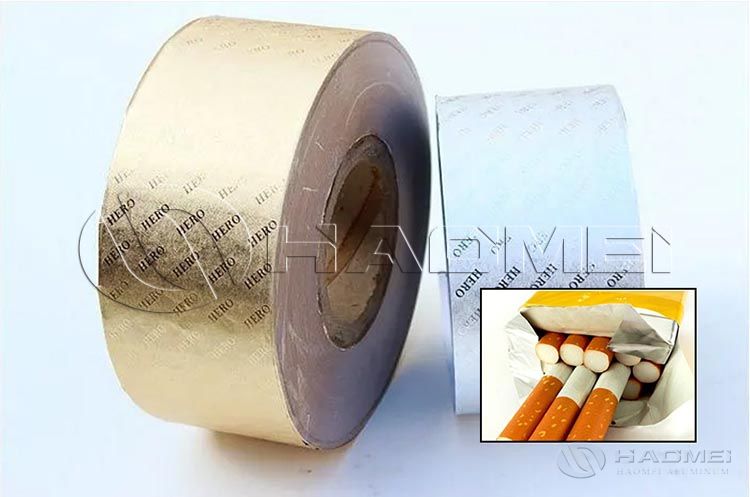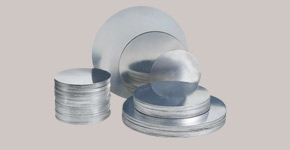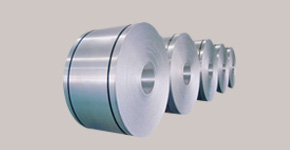
Aluminum Foil for Packaging
When you open a pack of cigarettes, you will find the silvery inner paper; when you open a bag of soft snacks, the subtle metallic texture is visible—these details you might not notice are actually the "highlights" of aluminum foil in the packaging industry. As a packaging material that combines barrier properties, ductility, and safety, aluminum foil has long been a part of our daily lives.

Cigarette Packaging
For cigarettes, "flavor" is their core competitive advantage, and external factors such as moisture, oxygen, and light are all "natural enemies" that destroy flavor. In this context, tobacco foil becomes the cigarette's "close-fitting protective clothing." Almost all mainstream cigarettes use aluminum foil composite materials (usually a composite of aluminum foil and paper, known as "aluminum foil paper") for their inner packaging.
It has three main functions:
First, it provides high barrier properties and locks in flavor. Aluminum foil's metallic structure completely isolates oxygen and moisture, preventing the flavor and tobacco components in cigarettes from oxidation when exposed to air. It also prevents moisture from seeping in, causing mold and flavor changes. Even after storage for a while, the original rich aroma of the cigarettes can still be smelled after removing the aluminum foil inner layer.
Secondly, it provides protection from light. Sunlight's ultraviolet rays can destroy the active ingredients in cigarettes, affecting the burning experience. Aluminum foil's light-blocking properties effectively block these UV rays, ensuring consistent cigarette quality.
Finally, it enhances the packaging's quality and practicality. Aluminum foil's moderate stiffness allows it to conform to the shape of the cigarette while remaining convenient for consumers to remove. Furthermore, its silvery metallic sheen adds a touch of sophistication to the inner packaging, complementing the outer color-printed paper box and elevating the product's quality.
For example, the inner "liner" of common hard-pack cigarettes is aluminum foil laminate. The inner packaging of soft-pack cigarettes is also often a composite of aluminum foil and thin plastic film, offering both flexibility and barrier properties.
Soft Packaging
Soft packs are one of the most common packaging formats in our daily lives, found in everything from snacks (potato chips, biscuits) and sauces (ketchup, salad dressing) to daily necessities (face masks, hand cream). The flexible packaging foil is the core material that allows these soft packaging products to extend their shelf life and safeguard their quality.
In soft packaging, aluminum foil is often used in the form of an aluminum-plastic composite film—an extremely thin aluminum foil (mostly 6-12 microns thick) laminated with a plastic film such as polyethylene or polypropylene. This composite film retains the high barrier properties of aluminum foil while overcoming the drawbacks of pure aluminum foil, such as its susceptibility to cracking and poor stretch resistance, making the soft packaging more durable and easily shaped.
In specific applications, the value of aluminum foil is readily apparent:
Soft food packaging: Snacks like potato chips and nuts need to be protected from moisture and oxidation to prevent them from becoming damp and softening. Sauce packets and pre-prepared meal packaging also need to protect against bacteria and odors. Aluminum-plastic composite film locks in moisture and flavor.
Daily chemical soft packaging: Products like facial masks and serums require extremely high sealing properties. Once exposed to air, their ingredients can easily deteriorate and lose their effectiveness. Aluminum foil composite soft packaging isolates oxygen and light, keeping the active ingredients in skincare products more stable. Consumers also appreciate its portability – carrying a few aluminum foil-wrapped face masks on the go saves space and prevents squeezing and leakage.
The versatility of aluminum foil packaging
Beyond focusing on cigarettes and soft packaging, aluminum foil has a wider range of applications in packaging. For example, in the pharmaceutical industry, aluminum-plastic blister packaging (individual packaging for tablets and capsules) leverages its barrier properties to prevent moisture and deterioration. In the baking industry, aluminum foil trays are both heat-resistant and heat-insulating, making them convenient for both takeout and home use.
Original source: https://www.hm-alu.com/a/aluminum-foil-for-packaging.html



